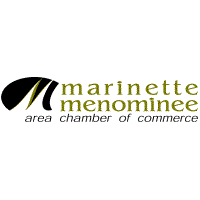Change isn’t optional—staying still is a slow death sentence for any business. But if you're running a small operation, the turbulence of internal shifts can feel like a wrecking ball through your already fragile framework. Maybe you’re adjusting to remote work, restructuring roles, or bringing in tech that makes half your old processes obsolete. Managing that kind of organizational change, and doing it without crushing morale or torching productivity, requires more than a slick memo and a team meeting. It demands intentional strategy, adaptability, and the emotional intelligence to know when to push forward and when to listen harder. Here’s how to actually do it—and not just survive, but position your business to come out stronger.
Start by Actually Listening—Not Just Pretending To
You can't bulldoze change and expect your team to keep smiling. People need to feel heard before they can feel bought in. That means carving out time to hear what’s working, what’s breaking, and what’s flat-out terrifying for them. Skip the performative town halls—opt instead for focused, smaller conversations that let people air it out without the pressure of performative optimism. Your employees might not have the final say, but their lived experience can surface bottlenecks and blind spots you won’t catch from behind your desk.
Roll It Out in Bite-Sized Chunks, Not a Tidal Wave
Trying to flip everything at once because “we need to move fast” usually guarantees you’ll move in circles. You’re far better off layering your changes—introduce one adjustment, stabilize it, then move to the next. Treat each step like its own mini-experiment with feedback loops baked in. That modular approach gives your team a sense of rhythm and predictability, which lowers anxiety and boosts their ability to adapt. You can’t microwave transformation, so stop treating it like a sprint to a finish line that doesn’t exist.
Give People a Reason to Care Beyond Their Paychecks
People don’t resist change because they’re lazy—they resist it because the “why” behind it feels disconnected from their daily grind. If the change only serves the owner or the board, expect pushback. You have to translate the purpose of the shift into something that matters to your staff. Will this give them more autonomy? Improve workflow headaches they complain about? Help them grow into roles they actually want? Tie the change to the stuff they care about, and suddenly the resistance isn’t so rigid.
Build a Guide That Doesn’t Get Lost in Translation
Drafting a step-by-step playbook for managing change isn't just smart—it’s essential if you want consistency across your organization. Lay it out clearly: begin with assessing the need, follow with outlining objectives, then move into stakeholder communication, tactical rollout, and post-launch evaluation. When you save that guide as a PDF, you preserve formatting, ensure universal access, and eliminate the risk of someone accidentally altering the blueprint midstream. And if updates are ever needed, a PDF editor allows you to make changes to documents without having to convert the file to another format.
Don’t Skimp on Culture—It’ll Break You Later
You can’t spreadsheet your way through cultural fallout. When organizations go through upheaval, your values either show up or they vanish. Keep your core cultural behaviors visible: reward flexibility, encourage experimentation, and double down on transparency. This isn’t fluff—it’s oxygen. Small businesses that keep culture front and center during transition hold on to their talent and avoid massive employee turnover trends that would otherwise cripple them. If you think you can fix culture after the dust settles, you’re already behind.
Measure the Emotional Temperature, Not Just the KPIs
Metrics are essential, sure—but if you’re only tracking project milestones or quarterly numbers, you’re missing half the picture. Emotional pulse checks should be just as routine. Use short, anonymous surveys, casual check-ins, or even non-traditional feedback tools like team mood boards or retrospective meetings. What you’re after isn’t just, “Is the new system working?” but “How do people feel about the way this is unfolding?” Those soft signals are usually your first warning before burnout, resentment, or attrition hit your harder metrics.
Create a Feedback Loop That Actually Feeds Back
Don’t insult your team by asking for input you never plan to act on. Real feedback loops mean people see their insights translated into action—fast. Even if the suggestions aren’t used directly, show your work: explain why something was or wasn’t feasible, and what you learned from it. That level of transparency builds trust. People start to see themselves as contributors to the change, not casualties of it. And when they feel that level of inclusion, the shift feels less like an edict and more like a shared mission. There’s a big difference between passive compliance and active engagement during change.
Organizational change in a small business doesn’t need to be a chaotic mess of unclear memos, stressed-out teams, and last-minute pivots. It can be a chance to reset, reimagine, and reinvest in the systems and people that actually move your business forward. But only if you’re willing to do the hard, human-centered work of listening, pacing, and making it matter to the people carrying the load. There’s no one-size-fits-all playbook—but there is a mindset shift that changes everything: stop managing change like a project, and start leading it like a relationship. Ready for that? You better be, because change isn’t waiting for you to feel ready. It never has.
Discover the vibrant business community at the Marinette Menominee Area Chamber of Commerce and explore opportunities for growth and collaboration in our unique two-city, two-state region!
